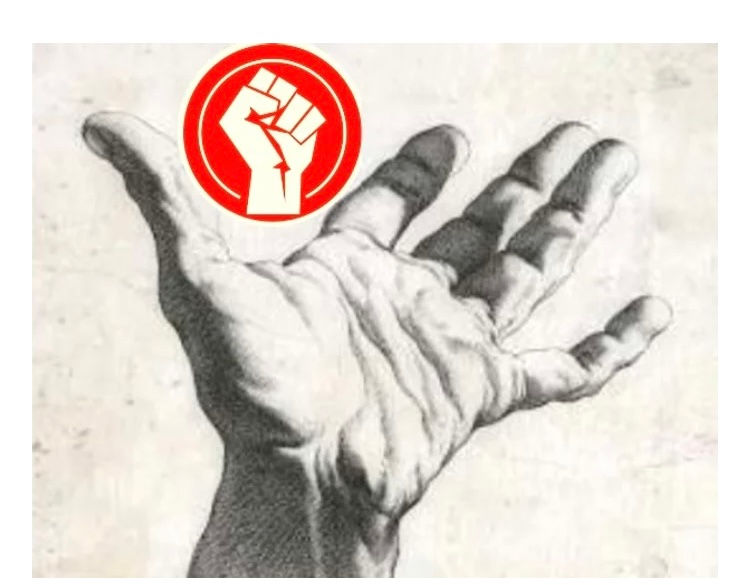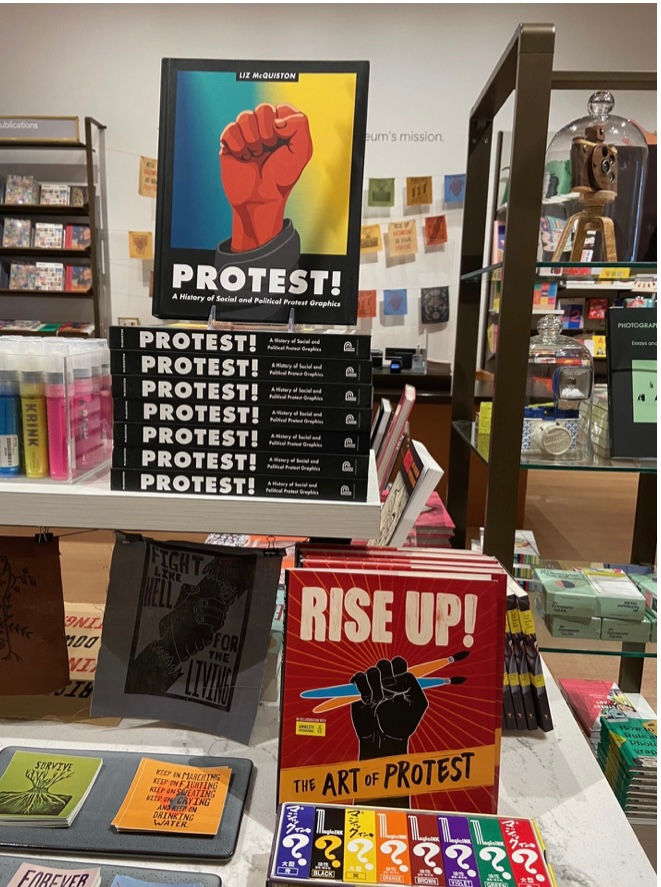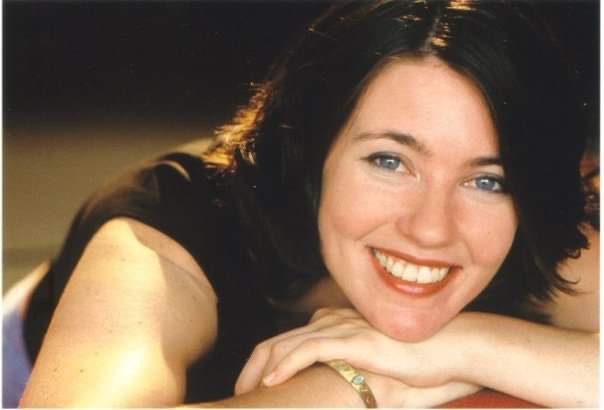The Invisible Hand
- Julia Caesar
- Dec 22, 2023
- 7 min read
Updated: Apr 16

Michelangelo Uplifted Hand 16th c.
Raised Fist 1848- 2023
Revolution is brought about by Force or Fraud, observed Aristotle--often flanked by both. History would agree with him, at least in terms of man-made revolutions. Since the rejection of Hegel's Idealism, Karl Marx's theory of historical materialism has in every generation summoned the condemnation of Capitalism and the division of leisure as a marker of inequality in the class struggle, but it is the Free Market economy alone that democratized leisure with the help of the 'invisible hand,' more likely than the raised Fist.
A new Religion had emerged out of the shadows and under the wing of the Owl of Minerva--Das Kapital, the Bible of the "working class", preached a wageless and propertyless abundance. In its place, the State and its counterfit wealth of a few, controlled all property and sustained a slave class until the alternate fulfillment of Hegel's poem "The owl of Minerva spreads its wings only with the falling of the dusk": we did not recognize the specter or calculate the price of communism until after dusk (when the daylight has gone) and with it---the death of millions. From the grave of this ideology erupts every few decades, the expectation of a different outcome.
As Economic Marxism lost its relevance in a post-industrial age, a growing middle class, and the 'diffused private ownership of capital' (Kelso/Mortimer), the democratic character of capitalism would promise peace and prosperity--the stronghold against violent revolution. A united self-interest would eradicate Class consciousness, the serpent of Marxian ideology: "Then the eyes of both of them were opened, and they saw their nakedness " an alienated class, between them (the workers) and God (the landowner). Even Marx who refers to the original state of man, free of toil in the garden, overlooked the fact that private ownership was intended from the beginning, that it was the outward act of the free person (Moses, Aquinas, Hegel, Locke), and all that was given to Adam was good. "Thou shall not covet your neighbor's house" (Exodus 20:17) implies the origin of private property, a divine Law (pre-Western) establishing boundaries against violence. It is Economic Liberty derived from private ownership that safeguards peace and the ability to balance the substitution of capital for labor to purchase leisure, that produce fruit: to contemplate, dream, invent and contribute to society.
If leisure be the fruit of Capitalism, then we must go back to its tree--Art. Marx himself said very little about aesthetics in his scattered writings because his dialectical materialism constrained him to believe, or rather convinced us that matter precedes thought and Art challenges this rational view. It does not fit so easily into historical materialism and its denial of diversity in human motivation and incentive. Art precedes the State, Social Class in its universal qualities--Religious and symbolic imprints of antiquity or Prometheus (Forethought) whose idea to steal fire from Mount Olympus for the progress of mankind, challenges Marx and Engel's materialism. That ember of intellect was the first brush stroke in the art of Civilization--Art is idea over matter, the antithesis to Marx/Engle's approach-- Art is thought.
Now--picture yourself in a boat on a river... meandering through the limestone halls of the Philadelphia Art Museum, relishing the chance to be inspired again by its Art collections with a renewed membership now that the mask mandates have been lifted, only to be greeted by a Fist in your face. That was the experience on a rainy Thursday, with my five-year old daughter:
My soul ached for transcendent leisure, some respite from the stress of the pandemic, pervasive discontent everywhere— I wanted to see the prophecies fulfilled at the Tiber river on the towering tapestries of Constantine, be entranced by the gaze of Charlemont’s Moorish Chief, moved by the spiritual abstractions of Rothko, delight in the collection of American furniture and craftsmanship, take in the silence of sacred mysteries in Medieval Art, scale the new perspective of humanism in Renaissance, see through the eyes of Diego’s frescoes, recall the Mythology imbedded in European paintings, enjoy the serenity in the tranquil pauses of the Japanese House, feel the ancient history of the Templed Halls of India, experience paradox in the ethereal permanence of the Chinese Galleries, stand still before the Allegory of Time, learn from the ornamental wisdom of Islamic and Persian traditions and remember innocence and a pure heart in Tanner’s Virgin—that was the expectation: totality of human connection through freedom of individual expression.
Force scene I or Foreseen
As we approached the gift shop, however, we were accosted by images of anti-fascist fists and books titled “PROTEST”, “THE ART OF PROTEST" and a wall of Marxist summer best seller reading, upstaging the PMA's archival 1500 years of Art History and over 240000 of its works. These were strategically placed no doubt by the most up-to-date activist managers, pushing their age old program of curating the oppressed. The art works that manifested a diverse perspective of the human condition were put on trial for not being socialist realism and this came during a politically hot interval in our Nation-- Election season.
Fraud Scene II:
Art has not been spared of Politics, in a Philadelphia study (DiMaggio) a correlation was found between cultural conflict and election cycles "politicians using art and culture to appeal to voters and mobilize constituents" This forceful message came at a price--packaged and displayed at $49.99. But we will keep hush hush about any profits made and spare them the embarrassment of any capitalistic association.

In the 1950's and 1960's under the guise of the "Congress for Cultural Freedom", the "Farfield Foundation" and other entities, the CIA "secretly promoted the work of American abstract expressionist artists - including Jackson Pollock, Willem de Kooning and Mark Rothko - in order to demonstrate the supposed intellectual freedom and cultural creativity of the US against the ideological conformity of Soviet art." (Saunders.1995)
Politics aside, my five year old, disinterested, sprung ahead of us, enchanted by a rice-paper accordion light that illuminated from within as she manipulated it with her hands. Her naiveté and sense of wonderment rescued us from a barrage of anti-art to be transcended through Art—and isn’t that its purpose? That was priceless.

The question is not wether museums should be political or become spaces for activism but if doing so is redundant. On the one hand, all art is a form of protest, from the Byzantine Monks against iconoclasts to the Dada movement and later Picasso's anti-war Guernica painting. On the other hand, protest is not Art because it lacks the ability to "transcend the particular circumstances of any single injustice to convey something more universal" (Khami. 2014). How is a museum to be a curator of Culture if it politicizes itself? The Philadelphia Art Museum has been a place of cultural integrity, shouldn't the diversity of its collections render it politically neutral?
A museum seemed a strange place to raise a Fist, a visual marker of discontent, faction and division. I tried to reconcile its symbol in a place that displayed thousands of years of struggle and enlightenment possible to mankind. The one hand of materialism seemed to be knocking on a wooden door that never opens, it has not grasped the door of Ghiberti’s La Porta del Paradiso (Door of Paradise) that ancient artists have walked through. The eternal aspect of human longing that Marxist theory always shuts out by the worship of reason alone--is inescapable and the denial of revelation is unreasonable as revelation confirms reason.
I felt a strange duality of opposing forces and maybe it was the dialectic influence of Marxism having its way by signature contradiction:
That the fist was aimed personally that I was part of a system that permitted the suffering of a productive class to provide for a leisure class.
2. I was being embraced by the same fist, recruited was I as a comrade, another extension of its limb.
Neither were true.
Was it rousing me (the Fist) from my false consciousness? I watched art viewers of every circumstance: a homeless man, a grandmother and her grandson, a school of inner city elementary students, an elderly couple, a struggling artist, a college professor. Was I the privileged one viewing the art, to be shamed for participating in the voluntary intrinsic human meaning of leisure activity? If I was privileged then so was the homeless man, the professor, the struggling artist. We were equally privileged to behold the transcendent work of the hand. It was the spirit of the artwork itself that obliterated class consciousness as we were equally moved by that hand of human wisdom and divine inspiration.
On that rainy Thursday--Art was the Revolution.
CODA, Soli Deo Gloria
Bibliography/References/further reading
1. Hegel, G. W. F. Phenomenology of Spirit. Translated by A. V. Miller, Oxford University Press, 1979.
2. Hegel. The Owl of Minerva. (excerpt). Elementd of the Philosophy of the Right. University of Berlin.1821..
3. Marx, Karl, 1818-1883. The Communist Manifesto. London ; Chicago, Ill. :Pluto Press, 1996.
4. Marx, Karl.. Das Kapital. Edited by Friedrich Engels, Regnery Publishing, 1996.
5. Hayek, Friedrich A. von (Friedrich August), 1899-1992. The Road to Serfdom.
6. Von Mises, Ludwig, 1881-1973. Economic Calculation in the Socialist Commonwealth.
Auburn, Ala. :Ludwig Von Mises Institute, Auburn University, 1990.
7. Aristotle. Aristotle's Politics. Oxford :Clarendon Press, 1905.
8. Kelso O. Louis. Adler, J. Mortimer. The Capitalist Manifesto. Publisher Random House New York, 1958.
9.Locke, John. Two Treatises of Government. Everyman. London, England: Phoenix. 1993.
10. The Bible (New Revised Standard Version):Exodus 20: 17.
11. Catholic Church. Pope (1878-1903 : Leo XIII). Rerum Novarum : Enciclica Di Leone XIII Sulla Questione Operaia. Lugano :Edizione a cura dell'Organizzazione cristano-sociale del canton Ticino per la celebrazione del LXX, 1961.
12.Pius XI, Pope, 1857-1939. On Atheistic Communism (Divini Redemptoris) : Encyclical Letter of Pope Pius XI, March 19, 1937. Chicago :Outline Press, 1949.
13. Smith, Adam. The Wealth of Nations . Oxford, England: Bibliomania Ltd, 2002.
14.Thomas, Aquinas, Saint, 1225- 1274. "On Law, Morality, and Politics.”Hackett Publishing Company, Inc.; 2nd edition (June 1, 2003)
15. Trotsky. Leon. Communist Policy on Art. 1923
Online Articles/Journals
Hinman, Lawrence M. Marx Theory of play, leisure and unalienated praxis. Againstprophil.org
https://www.mmkamhi.com/mmk/biography (Khami,2014)
DiMaggio, Paul, Lynn Robinson, Brian Steensland, and Wendy Cadge. 1999. Public conflict over the arts: A case study of the Philadelphia area, 1965–1997. American Sociological Association, Los Angeles.
Saunders (1995) Modern art was CIA 'weapon'
Sunday 22 October 1995 00:02 BST
Booth, William James. Economies of Time: On the Idea of Time in Marx's Political Economy. Political Theory.
Vol. 19, No. 1 (Feb., 1991)
Rhona Rapoport and Robert N. Rapoport. Four Themes in the Sociology of Leisure. The British Journal of Sociology.
Vol. 25, No. 2 (Jun., 1974), pp. 215-229 (15 pages)
.




Comments